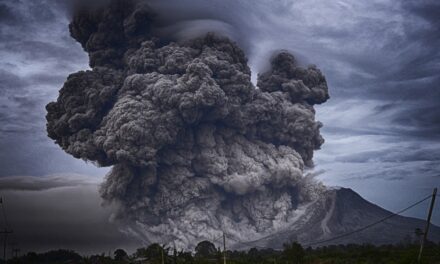Introduction to the Rule of 3 in Survival
Welcome to the world of survival where quick thinking and preparedness can mean the difference between life and death. Survival isn’t just about having the right gear or being physically fit; it’s about knowing fundamental principles that can guide you through critical situations. One of the most important of these principles is the Rule of 3 in Survival, a guideline that underscores the harsh realities and priorities one must manage in a survival scenario.
Survival experts often tout the Rule of 3 as a cornerstone of wilderness survival. This rule highlights the crucial timelines for human endurance: three minutes without air, three hours without shelter in extreme conditions, three days without water, and three weeks without food. Though these timeframes are not absolute, they offer a practical framework for prioritizing survival actions in an emergency.
But why are these specific time frames so crucial, and what strategies can one employ to ensure survival? In this comprehensive guide, we will delve deep into the Rule of 3, understanding its components, implications, and the practical steps you can take to navigate each aspect effectively. Whether you’re a seasoned outdoorsman, a survival enthusiast, or just someone who likes to be prepared, this article will provide you with valuable insights and practical advice.
Survival Priority 1: Air – The Essence of Life
It’s said that a person can survive only about three minutes without air, although this can vary based on individual health and circumstances. In a survival situation, ensuring a breathable environment is your top priority. This might mean finding ways to escape or protect yourself from smoke, toxic gases, or underwater entrapment. Techniques like controlled breathing and staying calm are crucial in these scenarios, as panic can increase oxygen consumption and reduce survival time.
Survival Priority 2: Shelter – Your Defense Against the Elements
The next immediate priority is finding or creating shelter, particularly in harsh environmental conditions. Exposure to extreme temperatures can rapidly become life-threatening, making it vital to understand the principles of maintaining body temperature. Whether it’s constructing an improvised shelter using natural materials or utilizing emergency blankets or tents, the goal is to protect the body from the elements, be it intense sun, wind, rain, or snow.
Shelter isn’t just about having a roof over your head. It’s about understanding and managing your body’s thermal regulation. In cold environments, this means insulating yourself from the ground, retaining body heat, and staying dry. In hot climates, it involves finding shade, staying hydrated, and avoiding overheating. Survival gear like emergency blankets, tarps, and even large trash bags can be lifesavers when used effectively to create shelter.
Survival Priority 3: Water – Maintaining Hydration
While you can survive three weeks without food, water is a different story. Dehydration can set in quickly, especially in hot climates or during intense physical activity. The body requires a regular intake of water to maintain vital functions, and even a 2% reduction in body water can lead to decreased physical and cognitive performance.
Finding, collecting, and purifying water is a critical skill in any survival situation. Techniques range from collecting rainwater or dew, finding natural springs, to purifying water from rivers or lakes. Modern survival gear includes portable water filters and purification tablets, but knowing traditional methods like boiling or solar stills can be invaluable when gear is not available.
But it’s not just about finding water; it’s also about knowing when and how much to drink. Overhydration can be just as dangerous as dehydration, especially in survival situations where water is scarce. Understanding how to ration water and recognizing the signs of dehydration are key skills.
Survival Priority 4: Food – Sustaining Your Energy
The Rule of 3 in Survival states you can live three weeks without food, but this doesn’t mean food isn’t important. It’s about prioritizing immediate threats to life. Once air, shelter, and water needs are met, securing food becomes the next priority. Food is your body’s fuel, and without it, your ability to perform essential survival tasks diminishes.
Foraging, hunting, fishing, and trapping become vital skills for acquiring food in the wild. However, it’s crucial to have knowledge about local flora and fauna to avoid poisonous plants or dangerous animals. Modern survival kits might include compact fishing gear, snare wire, and perhaps energy-dense food bars. But knowing how to utilize natural resources can make a significant difference in prolonged survival scenarios.
Moreover, understanding basic nutrition and how to ration food for energy efficiency is vital. In survival situations, your body’s caloric requirements can increase significantly,
especially in harsh conditions or when performing strenuous activities. Knowing what types of food to eat and when can help maintain energy levels and mental alertness.
Summary and Takeaways: Implementing the Rule of 3 in Real Life
The Rule of 3 in Survival is more than a catchy phrase; it’s a practical guideline for prioritizing actions in life-threatening situations. It helps focus on what’s most important: securing breathable air, finding or creating shelter, obtaining water, and then food. Understanding and practicing these priorities can significantly increase your chances of survival in an emergency.
Remember, knowledge is as crucial as gear. Regularly practicing survival skills, staying informed about your environment, and being mentally prepared can greatly enhance your survival capabilities. Survival is not just about enduring; it’s about adapting and overcoming challenges with a clear mind and determined spirit.
By understanding the Rule of 3 in Survival, you equip yourself not just with knowledge, but with a mindset geared towards resilience and adaptability. Whether you find yourself in the wilderness, in an urban crisis, or any unexpected survival situation, these principles can be your guide to making it through.








